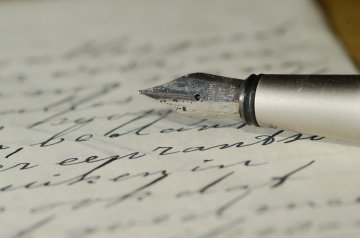The fountain pen was first developed at the request of an Egyptian caliph in the 10th century. The fountain pen was meant to replace the process of dipping a pen into ink with a pen that contained ink inside of a reservoir. Many developments have since occurred to improve the design of the fountain pen which brings it to the fountain pen that it is today.

Fountain pens do not require the same pressure of the hand which ballpoint pens require to write with. The ink from a fountain pen flows freely from the reservoir to the tip with just the gliding of the hand. The key to writing expressively with a fountain pen is to write with as little pressure as possible.
The ease of the ink flow from the pen to the paper allows the hand more freedom of movement. Fountain pens are known for their ease and comfort of writing, and their facility for creating unique lettering.
The portion of the pen which touches the paper is called the nib. The nib of the pen is usually made of gold or steel and narrows down to a point. The ink flows down to the narrowest point of the nib, and is distributed to the paper as the hand writes with the pen.
The end of the nib can vary in size from very fine to broad, which changes the width of the ink stroke on paper. For a much thinner line, a very fine nib would be used, but a broader nib would make a much bolder line.
New ink cartridges can be put into the pens when they have run out of ink for an easy and clean refill. Ink cartridges are available in many different colors and types of ink for a more personalized stroke.